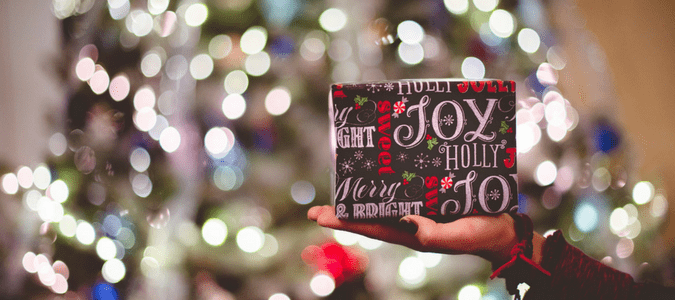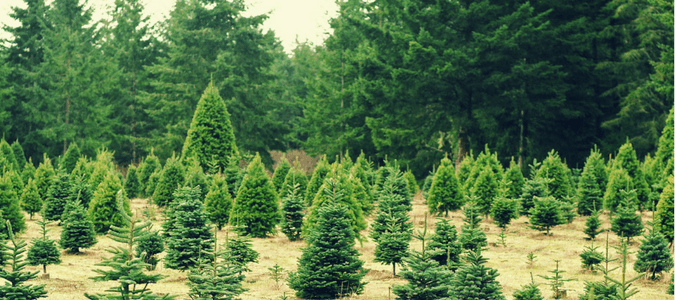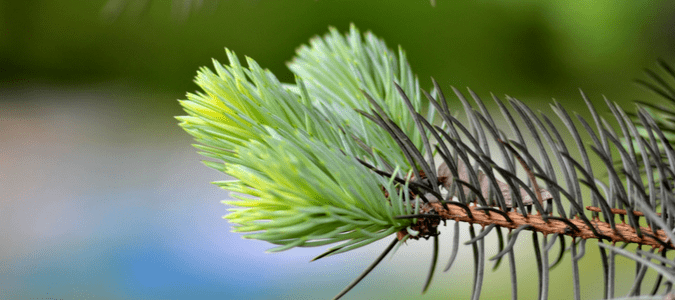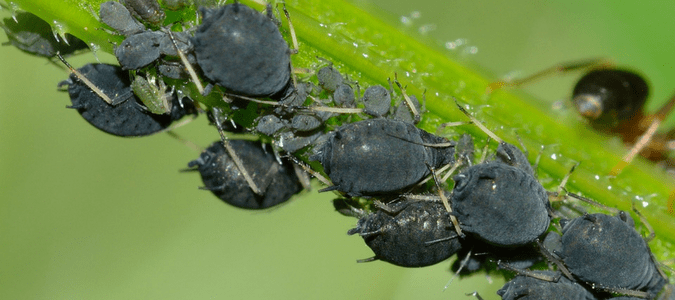
During the holiday season, thoughts of yummy food, a fire in the fireplace, warm sweaters, cute boots and spending time with family and friends fill your head and heart. The months around Christmas evoke warm and fuzzy feelings from treasured memories and family traditions. A freshly-cut Christmas tree fills your home with a welcoming, nostalgic aroma. The excitement and anticipation surrounding your visit to find the perfect tree may only be matched by the enthusiasm around the arrival of favorite family members and guests who come to stay, including… aphids? While we prepare to welcome these house guests, we don’t want to have to deal with getting rid of aphids or other creepy crawly, uninvited visitors. We certainly don’t want to have to invite an aphid control specialist to the party.
Like any live plant, Christmas trees can suffer from diseases, including root rot, Swiss needle cast and insect infestations. When you bring such a large once-living tree into your home, you can sometimes also bring in creatures who hitch a ride. One of the most common questions about Christmas tree bugs comes from homeowners wondering how to get rid of aphids on their Christmas tree. Although these are actually fairly rare instances, you or a professional can take precautions to ensure you don’t bring these pests or any others into your home. In this post, we’ll discuss which pests tend to find their way onto a Christmas tree, how to keep them out of your home and how to take care of your tree so it stays healthy until the new year.
What You’ll Learn:
- What Christmas Tree Bugs Should I Look For?
- Frequently Asked Questions About Aphids
- What Are Cinara Aphids?
- What Is A Giant Conifer Aphid?
- What Are Adelgids?
- How To Get Rid Of Aphids
What Christmas Tree Bugs Should I Look For?
There are a variety of Christmas tree bugs and their offspring to be wary of: aphids, mites, beetles, spiders, adelgids, praying mantis eggs, psocids, weevils and more. To make matters worse, some of these creatures can attract more pests and compromise the health of your tree.
So, what are aphids? There are different varieties of aphids that might be attracted to Christmas tree species, such as the balsam twig and Cinara aphids. Balsam twig aphids are gray-green and lay eggs which hatch in the spring. However, bringing the tree indoors can cause eggs to hatch before the tree is taken out of your home. These insects like to hang out on Balsam, Fraser, Grand and white firs. If you have a balsam twig aphid infestation, you can tell from the needles, since they will become curled and twisted. An infestation stunts the needles and causes needle loss without proper aphid control. Black sooty mold will also appear on the stem, trunk and needles of your tree if aphids cause enough damage. Bees and yellow jackets are also attracted to this sticky substance.
Frequently Asked Questions About Aphids
What Are Cinara Aphids?
Cinara aphids are the larger than the balsam twig variety. These aphids grow to nearly ⅛ inch. Most are wingless in the wild; however, indoors they can develop wings. These insects look similar to spiders or ticks, but they have six legs instead of eight. Aphids feed on conifer trees.
Trees are blackened by sooty mold that grows on aphid honeydew secretions. Aphid feeding can cause the tree to die early and the needles to yellow. Ants are attracted to the honeydew secretions and may cause additional damage as these pests chew on the tree. Wasps and other stinging insects are also attracted by this residue.
Is a Giant Conifer Aphid Different From a Cinara Aphid?
The giant conifer aphid and the Cinara aphid are the same insects, just known by two different names. Whatever you call these pests, even if you have just one or two that are on your tree, you can end up with a huge infestation just a few weeks later. The creepy-crawly bugs are much easier to spot than a balsam twig aphid because they are much larger. Some people say they look like a stink bug.
Adelgids
An adelgid produces a cottony wax which can make your tree look like it’s been flocked. They leave white little cotton-ball looking material on your tree. If you spot one on a tree you’re considering purchasing, you may want to consider selecting another tree to take home.
Ask any pest expert: these bugs do not leave your tree. According to the Missouri Botanical Garden, “These insect pests can damage the tender growth of trees by sucking out the plant’s juices. Adelgids feed only on conifers, including Douglas fir, hemlock, larch, pine and spruce.”

How To Get Rid Of Aphids
No matter how long your Christmas tree will be in the house, you can take some precautions to prevent bringing pests inside. Although many bugs can be found on Christmas trees, these tips are universal. Specifically, we’ll be looking at getting rid of aphids. If you are wondering how to get rid of aphids on Christmas trees, you can:
- Shake your tree before bringing it into your home. Some tree farms have someone who will shake your tree before loading it into your car or truck. Give the tree a good shake again before bringing it inside.
- Spray it with the garden hose. If you have a sprayer attachment for your garden hose, giving your tree a good spray with the jet setting will help knock out more pests.
- Check your tree for nests. Bird nests can attract mites and other unwanted pests.
- Use insecticidal soap. By spraying your tree with the soap, you can kill many, if not most, of the pests.
- Call in the experts. If you suddenly realize you have an infestation on your hands, you may need to call a professional to spray your tree.
ABC Can Keep Your Holidays Merry
Additional holiday guests of the pest variety are particularly unwelcome. If you find yourself with an infestation of aphids or any other pests, the professionals at ABC Home & Commercial Services can find the source of the problem and recommend a course of action. With ABC’s help, you can turn back your focus on making the holidays merry and bright.


